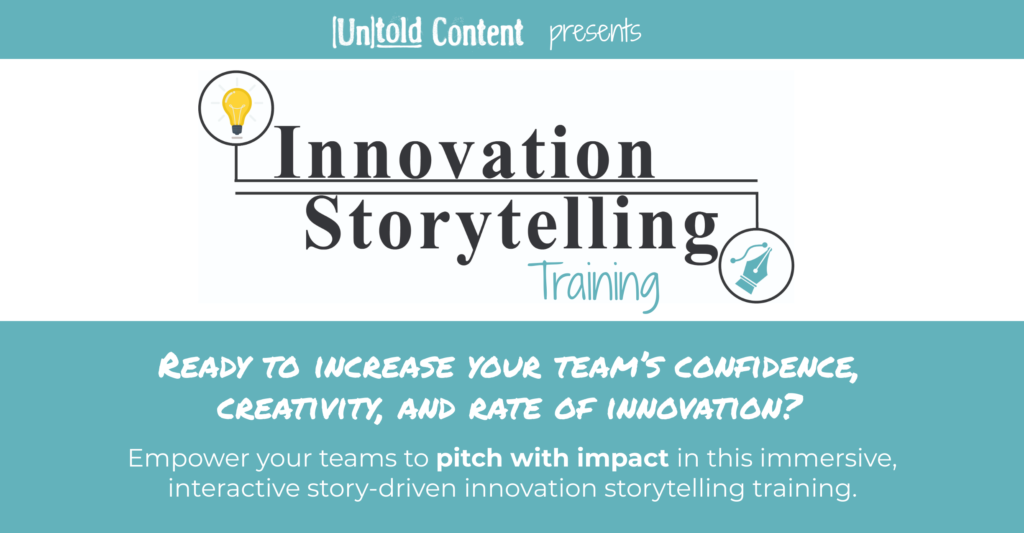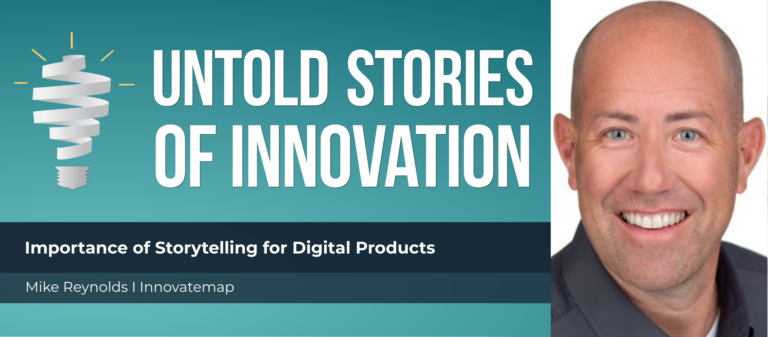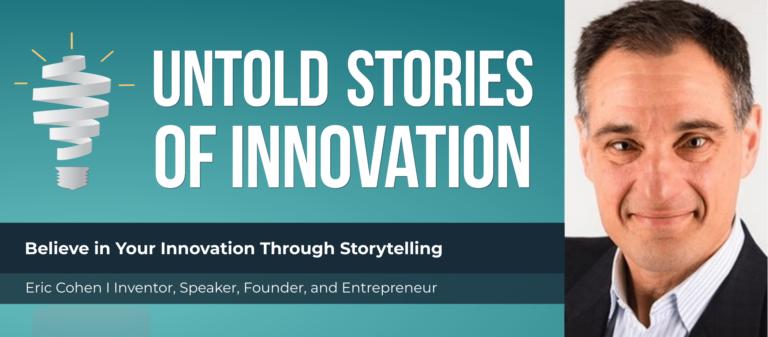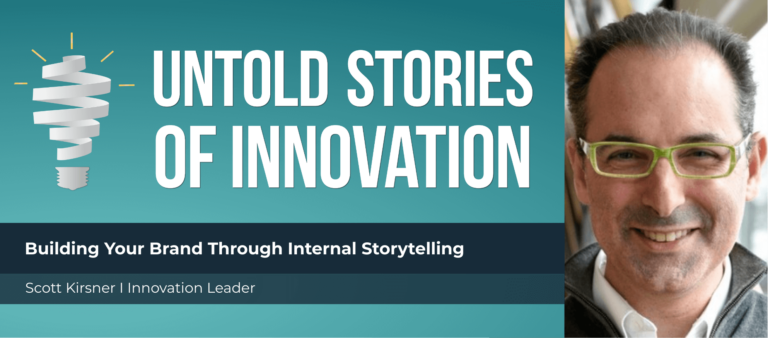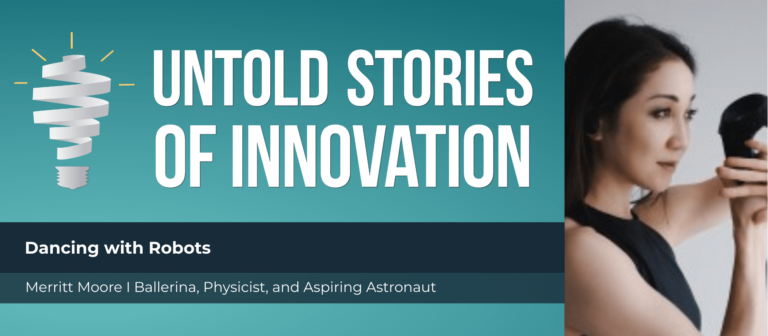Unifying Innovation Culture Through Failure with Dan Ward
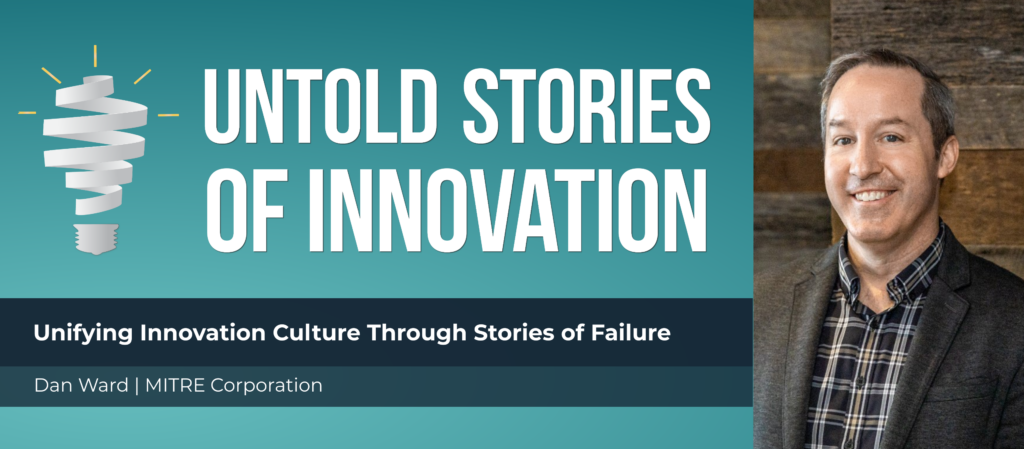
Untold Stories of Innovation
“It is important that the things we're trying are hard enough, that some of them won't work out. That's a sign that we're on the right track. Whereas if everything we attempt succeeds, then we're probably aiming too low.” Dan Ward, MITRE Corporation
From today’s episode you’ll learn:
We speak with Dan Ward, Principal Systems Engineer at MITRE Corporation, author, and Air Force veteran. His experience leading research and development teams within the US Air Force taught him that speed, thrift, and simplicity are the key elements in any technology developer program. Dan believes that unifying innovation culture through failure makes the stories more memorable and clear. A touch of whimsy with any subject matter, even engineering, helps the story land better. His professional takeaways and personal passions inspired his first three books, including LIFT, and he continues to advocate for storytelling in all areas of business, learning, and life.
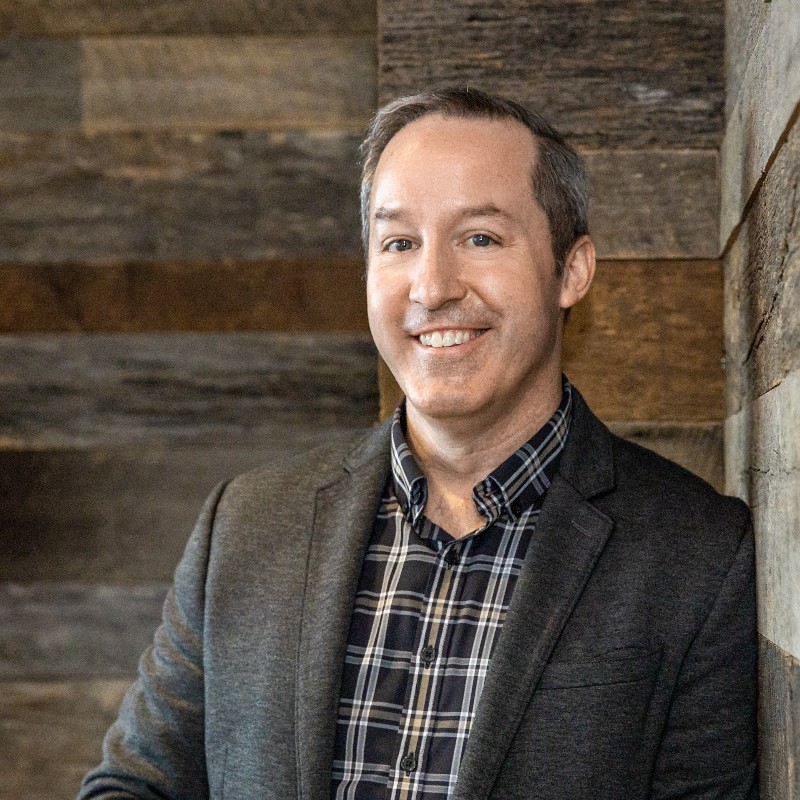
Dan Ward is Principal Systems Engineer at the MITRE Corporation. He previously served for more than 20 years as an officer in the US Air Force, where he specialized in leading high-speed, low-cost technology development programs.Dan is the author of three books: LIFT (2019), The Simplicity Cycle (2015) and F.I.R.E. (2014). He holds a bachelor’s degree in electrical engineering, a master’s degree in engineering management and a master’s degree in systems engineering.
This episode is powered by Untold Content’s Innovation Storytelling Training. Increase buy in for your best ideas in this immersive and interactive, story-driven experience. Where your teams refine storytelling techniques for their latest projects, prototypes and pitches—and get inspired by 25 epic examples of impactful innovation stories.
Katie: Welcome to Untold Stories of Innovation, where we amplify untold stories of insight, impact and innovation. Powered by Untold Content, I’m your host, Katie Trauth Taylor. Our guest is Dan Ward. He is Principal Systems Engineer at MITRE. He’s an innovation consultant and he is an author of multiple books. Dan, I am so thrilled to have you for this conversation today.
Dan: Hey, it’s great to be here. Thanks so much for having me on the show.
Katie: My goodness, there’s so much for us to talk about. I want to talk about failure. I want to talk about simplicity. Complex systems. I want to talk about your new book, Lift. And also the fact that we’re all working virtually right now. We’re in a strange time. So let’s just start with that. How are you doing?
Dan: I’m doing pretty well. Early on, we kind of made a little casual schedule for the day and we call it how to have a good day. And it’d have things like get up by 8:00, take a shower by 9:00, ask somebody how they’re doing by 5:00 in the afternoon. And my two daughters, my wife and I have all been trying to sort of follow that pattern for the day. And on the days we do that, it definitely seems normal.
Katie: I love that idea of asking someone how they’re doing before the workday is over. I think one of the things I miss the most about living in society with others is just those happenstantial encounters in the elevator or as you’re walking down the sidewalk and just sort of being able to spark up a short conversation with someone and see a different face. It’s odd to not have that. So doing proactive outreach to ask someone outside of your home how they’re doing, that’s a really, really good idea for sort of living holistically right now.
Dan: Yeah, it’s so important to have those connections. In fact, an experiment we recently did with some folks I worked with, we called it a virtual ambient huddle. So everybody dialed into the same Zoom room. We put our cameras off and we turned our mics on mute. And we just sort of quietly worked on our own individual things. It wasn’t like a meeting where we had an agenda. And then any time somebody had a question or you want to sort of compare notes with somebody, you come off mute and you sort of speak into the room. Unifying innovation culture through failure. And it was just this amazing experience that we were all working together, having that sort of virtual ambient connection. And my favorite part was at some point somebody left their mic on and you could hear them breathing in the background. Lovely. It’s so nice to just hear this — and it wasn’t like, you know, heavy, weird breathing it was just a faint in-out of breath. And it was just like, oh, we should have been doing that from the beginning.
Katie: Wow. That just makes my heart beat faster, thinking about that. It’s true. All those tiny little moments where we connect as humans. If we’re not doing intentional work like that right now, it can feel like it’s lost in some way. So I love that example. Thanks for sharing that.
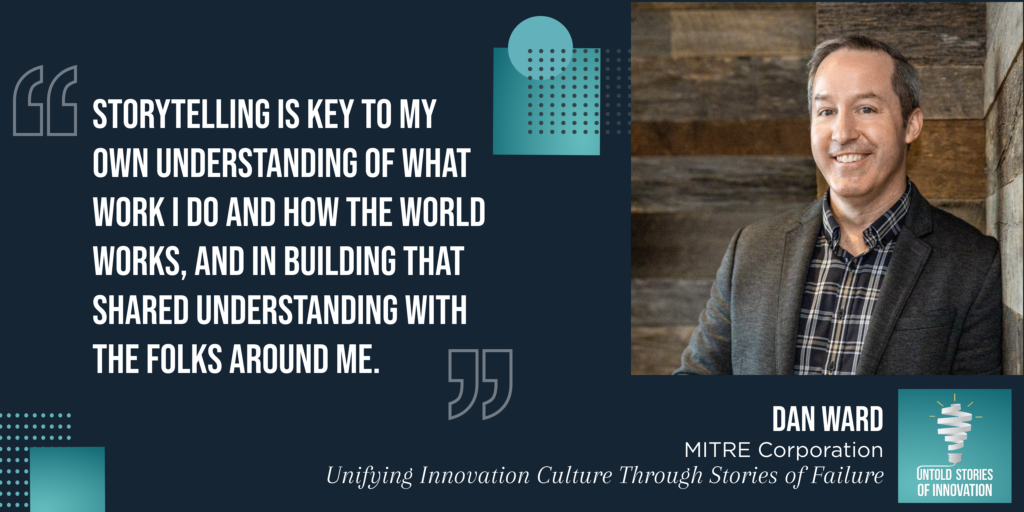
Dan: Sure.
Role of Storytelling in Innovation Culture Through Failure
Katie: So, Dan, you are an innovation storyteller. Of course, you’re an engineer by trade. You’re an author. But in all of your books and all of your presentations and all the social media that you put out there, I can tell that you are a powerful storyteller. So I’m dying to ask you what role you feel storytelling plays in innovation.
Dan: Oh, I think it’s absolutely critical. And you’re right, I’m an electrical engineer as my undergrad. I have a couple of master’s degrees in other types of engineering. And I spent 20 years in the Air Force as a military technologist. And so that’s not the typical set of credentials for a storyteller. But I figured out pretty early on — and I remember so vividly — as a young captain in the Air Force, realizing that the best ideas in the world are absolutely worthless if you can’t express them clearly to the people around you or your fellow travelers and you know, the people whose heads you’re trying to get into. And through a number of different books I read, and classes I took, the conversation I had with people, I sort of learned that telling stories is just a really effective way to develop your own understanding of ideas and things, but also to build that shared understanding. Unifying innovation culture through failure. So storytelling is absolutely key to my own understanding of what work I do and how the world works, and in building that shared understanding with the folks around me.
Katie: You know, let’s pause for a second. I want to say thank you, first of all, for your service. You were a lieutenant colonel in the Air Force for 20 years and six months. That’s incredible. Can you tell us a little bit about your journey from there into the innovation space?
Dan: Yeah, so I think there were two main triggers to get me into doing this thing called innovation. First was a lot of reading, Tom Peters in particular. I think he was the first kind of management guru and writer that I encountered. And he was just really significantly influential in my professional development, and continues to be. And he’s still brilliant on Twitter even today, as much as the book continues to impress and inspire. And he has a very story based approach to his work. And so long with reading there was also a lot of reflection. And I vividly remember as a young captain sitting at my desk — I can picture the desk so clearly — asking myself a really important question: why do some military technology programs cost more, take longer, and do less than they promise? And then why do some other projects deliver ahead of schedule and under budget and do more than they were designed to do? And I didn’t know the answer to that question and it bothered me. And I’m like, well, what’s different between these two categories of technology development projects? So I began doing some very informal research at first and then a little more formal into my second master’s degree and doing a lot of writing on this area and doing some experiments on my own career. And I realized that my biggest frustrations and failures were inevitably when I was part of a cast of thousands spending decades and billions trying to build something. Unifying innovation culture through failure. All my proudest moments, all my biggest successes were when I had no time, no money, really small team, just a really important mission, and we kind of got it done without a lot of resources. So my big conclusion was that speed, thrift and simplicity are really the key attributes of any successful technology development program. And that if I just say speed, thrift and simplicity are the key attributes of a technology developer program, nobody’s gonna remember that. So what if I tell stories about this project this way and this other project that way, and here’s how we made decisions and here’s how we solve problems, and give those examples in the context of an actual spacecraft or a fighter jet or any other kind of exciting looking technology. That approach helps share and spread that idea.
Katie: Yes. So tell us about — I think this is really the core thesis, right, within some of your books. So the book FIRE: How Fast, Inexpensive, Restrained and Elegant Methods Ignite Innovation. And then your other book, The Simplicity Cycle: A Field Guide to Making Things Better Without Making Them Worse. Which, by the way, is probably the best title of any book.
Dan: Titles are so hard, and I was so pleased with the subtitle for The Simplicity Cycle in particular.
Katie: Yeah. How did you ideate that title? I love it.
Dan: Well, iteratively. We had so many different versions and you know, writing a book is a lot of effort, coming up with a title for a book that you’ve written is even more effort. I think —
Katie: Yeah, there’s a lot of pressure around that.
Dan: Yeah. Yeah. So we tried a whole — a number of different things. And then when we got to that one, making things better without making them worse, I was like “that — that’s what it’s about.”
Innovation Culture: Simplicity
Katie: So this concept of simplicity and simplicity design, I think at this point it’s really taken hold of the innovation community, right. So we have lean innovation and the lean startup methodology as really at this point being the predominant and agile approaches. Those are really the predominant ways to approach innovation and the design spread. And this to me, the methods that you’re — the sort of theory behind that work is The Simplicity Cycle and FIRE. To me, that really is part of that larger conversation. Do you agree?
Dan: Yeah. In fact, The Simplicity Cycle was the second book that got published, but was actually the first one I wrote. When I proposed it to my agent and my publisher I said, “Yeah, this is part of a larger concept that’s about speed, thrift and simplicity.” And they said, “Oh well give us a proposal for that one.” And they said, “Well let’s do the FIRE book first.” “But I haven’t written that one yet.” So I had The Simplicity Cycle mostly written at that point. Unifying innovation culture through failure. So I had to really quickly write the FIRE book, thinking I had more time to do that, but it turned out I did not. So I pulled that one together in about four months. But really, that was a 10 year project because I had really begun the research and the work on that over the past decade leading up to that and getting the actual book contract.
Katie: Isn’t that incredible how knowledge can build and build and build, and then you have to work within such a finite amount of time to get it articulated and out there in the world. Did it — did that feel like a surreal process?
Dan: Unifying Innovation Culture Through Failure. It really kind of was. And fortunately, I’ve been a collector of stories for a long time. So it was just a matter of figuring out, OK, which of the stories that I need to tell, in what order to sort of make it coherent, larger narrative and — My editor over at Harper Collins was just brilliant and terrific. And the most common feedback I got from her was, “I need one more story in Chapter 2 here.” And then this paragraph expanded into another story. And that’s just the best kind of, I think, best kind of editing feedback to get as opposed to, you know, “You use the word kabillion, it should have been kajillion.” I actually got that feedback from my copy editor as well.
Katie: That’s hilarious. I love it. Yeah, and you know, The Simplicity Cycle starts with really powerful storytelling right out the gate. So can you take us into how you organized? You said you’re kind of a collector of stories, that you are always paying attention and kind of a believer that stories could help motivate or inform or win champions and get buy-in. Unifying innovation culture through failure. Could you tell us what that actually looked like for you in your writing process? As you’re putting these books together, did you sort of have an ongoing Google Doc or a spreadsheet or how did you organize and keep track of all of the stories that ultimately became the heart and soul of your books?
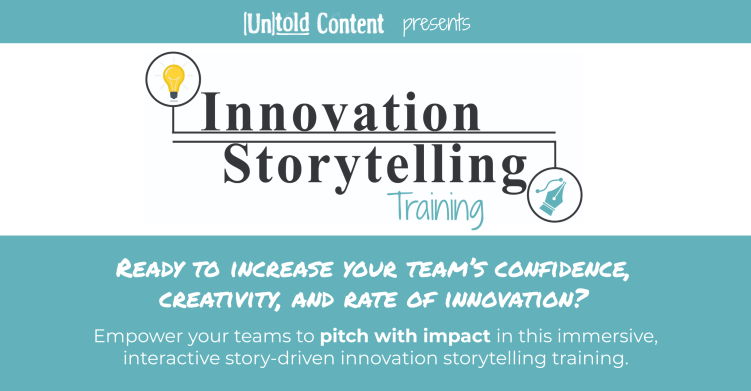
Dan: That’s a great question. Actually, you’re right. I write all my books out by hand in a notebook for my first draft. And —
Katie: Really?
Dan: Unifying Innovation Culture Through Failure. I do. I do. It does a couple things for me. The pace of writing, just the physical pace of writing with a pen on paper tends to line up with the pace of my thought. So whereas if I’m typing my fingers can get ahead of me or I can’t quite keep up. But there’s something about that physical experience of putting ink on paper that just lines up well with the speed at which my brain is operating. The other, really the most important thing this does for me is it forces me to revise. It forces me to edit. Because once I’ve written it out on paper, I now need to type it. And that means every single word that I’ve written down has to get typed.
Katie: Yes.
Dan: Unifying Innovation Culture Through Failure. Whereas if I compose on a keyboard, I can get lazy. If I compose on a keyboard, there’s nothing forcing me to go back and revisit every single word. And that’s such an important component of the writing process is to do those revisions, because good writing is just bad writing that’s been rewritten. So it lets me sort of take my bad writing and forces me to rewrite it. And I do have a fun little technique, I use spiral down notebooks and I write the main text that I’m writing on the right hand side. And I don’t write on the backside of the paper. Unifying innovation culture through failure. But as I’m looking at my notebook laid out in front of me, the left side, like the back side of the sheet of paper, is blank there. And that gives me space where as I’m going through and rereading it, you know, like, oh there’s something I meant to mention, but how do I fit that in between these two paragraphs on my main thread? I can flip over to the left side and there’s a whole extra blank sheet of paper there, a big blank side. I can write my stuff there and just do a little arrow and draw it in. And again, that gives me that freedom, that physical space to capture that stuff. Which if you’re typing on a keyboard it’s no problem. But, you know, on paper, you have to overcome that — the difficulty of how do you insert something new in between two paragraphs where you don’t really have space to do that. So that gives me that space.
Katie: Thank you so much for sharing that. I love getting really clear insights into how someone creates a book or puts their thoughts and their insights together in a way that organizes them. And that’s really — that’s a really neat model to really think about and enact the idea that writing is recursive. And the best writing takes time. It takes returning back to those same words and refining them. And I like that you pointed out the importance of speed too, which I think there’s so many options now for creating content. For example, voice activation now or voice dictation. A lot of people like to use that. But it’s interesting. That’s even — that’s sort of hyperspeed beyond typing and that can be even more challenging. But I’ve seen other writers who are able to sort of talk out their thoughts first and then take that draft and start to refine it. But speed is such an interesting variable when it comes to trying to get our thoughts down.
Dan: Yeah, absolutely. And speed is actually a big theme in a lot of my work, especially the first book, the FIRE book. And I make the point that speed — there’s a difference between being fast and being hasty. So I talk about speed with discipline, and so speed that gets you to the finish line in the least amount of time possible, as opposed to sprinting. I mean, I say that in the famous Aesop’s fables the tortoise was faster than the hare, the tortoise got to the finish line first. And that’s the point, isn’t it? And so there’s a type of speed that can be sloppy. There’s a type of speed that can be hasty and cutting corners that shouldn’t be cut. So I talk about speed with discipline, a sustainable speed. If you’re operating at a speed that you can’t keep up that pace, then you’re going too fast. And ultimately that’s going to be slower in the long run.
Katie: Unifying Innovation Culture Through Failure. Yeah, absolutely. And can lead to burnout so quickly in your innovation teams as well. Or errors or mistakes that could lead to failure. I love that you tackle failure in a lot of your work. Can you share with us some of your views on the role that storytelling plays inside failures in the innovation process?
Unifying Innovation Culture Through Stories of Failure
Dan: Yeah, so failure is a big theme in my latest book, Lift. The subtitle for that one is Innovation Lessons From Flying Machines That Almost Worked and the People Who Nearly Flew Them. We’re looking at flying machines from the late eighteen hundreds, so in the decades right before the Wright brothers came along and built the first airplane. A number of other people tried building flying machines and they were not as successful as Orville and Wilbur. And parenthetically, we really should refer to them as the Wright siblings because their sister Katharine was a huge partner, played a huge role in that work. And so it wasn’t just the two boys. It was all three of them. And so I do try to remember to refer to the Wright siblings, not just the Wright brothers.
Katie: You know what? I actually never heard that before.
Dan: Unifying Innovation Culture Through Failure. Yeah, she’s vastly overlooked. Even though Wilbur himself said, “If history ever thinks of us in the context of aviation, they must remember our sister as well, because she was so influential and so involved in the whole thing.” The first fly was 1903, and the first book about her, it was titled The Wright Sister, came out in 2003. So a hundred years later. It’s just inexcusable that she’s been overlooked.
Katie: I’m thinking — our headquarters for Untold is in Cincinnati, we’re about forty five minutes from the birth of aviation. And everything about Dayton, Ohio, is, you know, themed towards the Wright brothers. And that’s really interesting. Thank you for sharing that.
Dan: Unifying Innovation Culture Through Failure. Yeah. Yeah, I’m a big fan of her contribution to aviation. But so the book Lift is all about failure and studying failure and really calling it failure and being honest about our failures. And so the main theme is about how do we — what does it look like to really study failure and learn from it in a way that helps advance the field, whatever the field is you’re working in. And in the late eighteen hundreds, the field was aviation at a point in time when that problem had never been solved. No one had ever succeeded. So the only thing you could do was study failure. And to this day oftentimes, you know, the scientific community in particular has a challenge with not publicizing their negative results. You know, if you’re going to publish scientific papers as we did this experiment, and this is what we learned, and it was a big success. If you did an experiment that did not give you the results you were looking for, we’ll never speak of that again. And we bury it and nobody ever hears about it. And what that leads to is somebody else is gonna go do that exact same experiment, get the exact same results, and that’s just wasted time because, you know, that was already a performed experiment. We don’t need to repeat that one. So the new book is really inspired by a book published in 1894 by a guy named Octave Chanute. It was called Progress and Flying Machines. And he basically studied 400 years and documented 400 years of failed aviation experiments. He was trying to figure out three things. The first: is flight possible? Is it even theoretically possible to build a flying machine capable of carrying a person in the sky? And he correctly determined that, yes, I think it’s possible. His second goal was to figure out, what are the dead ends? What are the bad ideas we should just stop doing? And he correctly identified that like gluing feathers onto your wings, probably you don’t need to do that. We can all stop gluing feathers onto our wings, right. And then the third goal was to identify what are the most promising pathways? What are the things that are most likely to lead to success? And he correctly identified, for example, that static wings are better than flapping wings, you know, even though birds, bugs and bats all flap their wings to fly. And, you know, it’s just self evident. This is how nature flies. This is how humans should also fly. It’s like no, flapping wings are not the way to go. Your wings can be stable, they can be static, and you can produce lift with wings that do not flap, which was a remarkable discovery. And he did that experimentally and he did that by studying what worked and what didn’t and what had been attempted and what had been accomplished. So we have chapter one of my new book is all about Chanute and his research. And then there’s four other main characters in the book. It’s really telling their stories. So it’s a book about history, but it’s really modern innovation lessons from these historical stories.
Katie: Unifying Innovation Culture Through Failure. What surprised you in terms of the greatest sort of lessons from failure? Were there — what to you is the most exciting discovery in the process of researching this book when it comes to how we view failure?
Dan: Oh, I was really struck by the visuals, by the images. Chanute’s book is full of these just gorgeous line drawings of absolutely bonkers flying machines, things that you just look at and think, oh my gosh, I would love to have seen somebody try and fly with that, even though I know it would never work. So, you know, as a writer, I spend a lot of time with words. And so it was a bit of a humbling experience to come to that realization that a picture really is worth a thousand words. And the importance of visuals and graphics as a companion to storytelling wasn’t a concept that I came into this project with that in mind, but it was really one of the key takeaways. And that is just to use images, to use drawings and pictures and visuals as a way to communicate the ideas and the stories that we’re trying to do.
Katie: In order to really help the modern reader understand the level of risk, the level of ideation that had to go into those first concepts of flight, I think you’re right, we had to hear the story, we had to see the visuals in order to really get a full grasp of the kind of risk taking and their thinking that that had to take.
Dan: Unifying Innovation Culture Through Failure. Yeah, some of these folks were taking just breathtaking levels of physical risk. And of the five main characters that I write about in the book, one of them did die in a glider accident. So these were risks that actually were in the engineering parlance, they were realized. They encountered the negative consequences that they had exposed themselves to. Fortunately, many of them survived and did make progress in the direction of solving the problem of flight. But yeah, the risks are just virtually incomprehensible to me. And the only way I can kind of make sense of them is that the risk of flight was deemed to be acceptable. They were willing to accept the physical risk because the risk of never flying was unacceptable. They just could not live with never having attempted to fly. Living just life on the ground was an unacceptable risk. And so they decided to accept this other risk. And that’s what engineers always do, we’re always evaluating a variety of different risks and trying to figure out which ones are the risks we’re going to accept and which ones, which risks are the ones we’re going to avoid.
Communicating Failures in Innovation Culture
Katie: And I want to dive deeper into something you said a few moments ago about failure stories and the lessons we learned from failure and whether we choose to communicate failures or not and why. And this idea that our scientific research or our innovations, when they fail, there’s a lot of shame and fear in communicating those failures or even, like you said, calling it failure in the first place. It sounds as though the act of storytelling around failure, the risk of not being able to call something a failure and discuss it and storytell around it is that those lessons that you learned in the process will never get shared. And something is a far worse failure if there’s no learning coming from it, right?
Dan: Unifying Innovation Culture Through Failure.Yes, absolutely. Absolutely. In my first book, I talk about two types of failure, optimal failure and epic failure. So an optimal failure costs you a little and teaches you a lot. An epic failure is the other way around. It costs you a lot and teaches you a little. So failure is inevitable. Failure is going to happen no matter how lucky or smart or hard working or tall or good looking you are. Sometimes things just aren’t going to go your way. There is going to be failures. So while we can’t avoid failure entirely, we can influence the direction in which we will fail. We can influence the type of failure we expose ourselves to. And so back to that idea of speed, thrift and simplicity. When you have a small team with a short schedule, a tight budget, that type of project only fails one way. It only fails optimally. We haven’t exposed ourselves to a lot of loss. Our exposure to risk, generally minimal. Whereas if you’re spending decades and billions, when that kind of project fails, man, it hurts a lot. You’ve invested billions of dollars into this and failed. Those billions are just gone. And if you spent decades on it, it’s just that much harder to really get learning out of a longer term project like that. Because by the time we learn anything, it’s too late to even apply some of those things. And it’s hard to get the visibility into the work because the decisions we made 10 years ago are coming to bear fruit now. Do we even remember what those decisions were, and do we see the cause and effect relationship? So it’s much easier to get cause and effect relationships on a short schedule. So it’s one of the big reasons I say small team, short schedules, tight budgets, that fosters more learning and helps us tell the story better.
Katie: Unifying Innovation Culture Through Failure. So interesting. Are there certain methodologies in the innovation world that you think are more suited for that type of approach?
Dan: Unifying Innovation Culture Through Failure. Yeah, I think you see a lot of that in like the lean startup type approach, actual software development, anything that encourages you to incrementally, iteratively do a series of experiments, reflect on those experiments and have each one build on the next. So that’s kind of the better known methods that help support that. A specific technique that my team and I use that I hope catches on, I hope everybody starts doing this, we call it a failure cake.
Failure Cake: Moving Innovation Forward
Katie: Unifying Innovation Culture Through Failure. Yes, I was going to ask you about this, because you’re the first person who introduced me to this concept and I’ve mentioned it on the podcast before. So shout out to you. This is great. I don’t know if that episode has aired yet, but please tell us about the failure cake approach. I love this.
Dan: Unifying Innovation Culture Through Failure. We are so delighted to do failure cakes. And once this whole social distancing thing is over we’re looking forward to doing them again. There’s two versions of the failure cake and the first one was — my team and I put in a proposal to get some funding for an activity we were going to do. And we didn’t get that. We did not get selected and we didn’t get funded. And so one of the members of the team went to a grocery store, bought a cake, had them write “congratulations on your failure” on the cake and brought into the office. And we all sat around and we ate the cake and we reflected and we discussed what we had attempted and how to account. Now, this cake was bigger — it’s not a very big team — so the cake was bigger than we could eat just among ourselves. We then brought the cake into the hallway and we shared slices of the cake with the people in the hall. And people were like, “Oh, is it somebody’s birthday?” And we said, “No, no, this is a failure cake. We are celebrating the fact that we tried something. This failure shows that we put ourselves out there. We took a go at it.” And there’s something comforting about sharing that cake with your friends. So we’ve done that a couple of times with that team because my team keeps trying stuff and sometimes it works out, sometimes it doesn’t. And we say, “Hey, even when it doesn’t work out, at least we get a cake out of it.” In a variation on that theme, we got a really big sheet cake, like one of the biggest ones we could get at the store. We set up a table in our company cafeteria and we had a whiteboard and a bunch of little yellow stickies and the cake said “celebrating our failures.” And the offer was come get a piece of cake and come share a failure story. And, you know, people would write down their failure on a little yellow sticky and stick it up on the whiteboard. So give us a failure, we give you some cake. And it was just this amazing experience. I mean, some of the stories were funny, some of them were poignant. And it really helped reduce some of that shame that we — you mentioned the word shame earlier, or shame around failure. We were recognizing everybody fails and we can be honest about the failure and having something sweet, having that cake helps reduce the pain and the shame of that experience. And when we’re all in this together and we’re sharing these stories around food, you know, storytelling and food go together so well, and we’re doing it publicly, it was just a really beautiful experience. And again, once we’re all back in the same building again, it’s something anybody can do. You can just — whatever company you work with, wherever you are, go buy a cake. Set it up in the cafeteria, some public place and say: “Give us a failure story, we’ll give you a piece of cake.” And just watch the magic unfold.
Katie: Unifying Innovation Culture Through Failure. Thank you so much for sharing the full story around that. You know, and just kind of hearing a little bit about it on LinkedIn, I thought, oh, that’s really, that’s a cool idea, that’s really nice. But I didn’t, it didn’t really resonate with me at the same level as hearing you explain it here on this podcast, because that deeper ability to say we’re celebrating the fact that we tried. The way that that can shift a culture, the way that that can help empower people to put themselves out there and take some risks. You know, I think we’re all in all of these stage gate processes and innovation processes are in place to help create checks and balances and red lights and green lights. And I think all of that is critical. And obviously also all the methodologies around evaluating and getting feedback before you move on to the next scale of your idea. But all of that in mind, I think there’s still at the heart of it, if you’re not willing to think big or dream bigger than the way you’ve always done things, right, you’re just — that part of the innovation culture, you’ll stagnate. I love—
Dan: Absolutely.
Katie: Unifying Innovation Culture Through Failure. Jeff Bezos, in his letter to shareholders in 2019, he said, “You need to expect bigger failures now because we’re going to start taking bigger risks.”
Dan: Yeah, absolutely. Absolutely. And I remember in the 90s, NASA had their faster, better, cheaper initiative where they were trying to figure out ways to get low cost access to space. And Dan Golden was the administrator of NASA at the time. And he said, look, of these 16 missions that we’re going to launch under this faster, better, cheaper umbrella, he says, if we have a 100 percent success rate, that will be a failure. That will mean we weren’t pushing the envelope hard enough. We weren’t trying difficult enough things. And fascinatingly, of those first 10 missions, nine of them succeeded. They had a 90 percent success rate, which was way higher percent success rate than anybody ever anticipated for this high speed, low cost access to space. But thank goodness one of them failed because otherwise the whole thing would have been a failure. Right?
Katie: That’s right, yes. I love it.
Dan: And I think one of the things a leadership message like that does for your community — and it’s on a smaller scale, same thing the failure cake does when you set up in the cafeteria — it creates a psychological safety. It helps contribute to a culture of — a high trust culture.
Katie: That’s right.
Dan: You’re safe. It’s an acceptable place to be honest. And being honest and sharing, actually, what happened, that should come naturally to engineers because we’re supposed to be all about data. But it can be challenging because engineers are also human, at least most of them are. And, you know, we still have to overcome the natural inclination to do self preservation and to, you know, to not really trust the people around us because we’re afraid of being made fun of or being looked down upon or, you know, “Hey, you didn’t you didn’t succeed.” But we recognize when all of us are there, it really helps create an environment of high trust and psychological safety, which is so critical to doing experiments and making significant progress and innovating.
Katie: And it’s critical, I think, too, the resiliency of doing that, because it is really difficult after you hear no or after your idea gets shelved or after maybe you try a first experiment and it fails and maybe you try a tenth experiment and it still fails, to come back to the lab bench, come back to the computer, come back to your team and try again.
Dan: Yeah.
Everyone is an Innovator
Katie: It can be very deflating and difficult to be an innovator and to think innovatively, whether you’re officially labeled someone on the innovation team in your organization or not, right. Organizations at this point want all of their people to think of themselves as innovators. And that takes a lot of mindset and resilience to know and accept that, hey, it’s OK if 50 percent of my ideas don’t even get past the idea realm or it’s OK if — you know, there’s a certain way of measuring and sharing and creating a culture that’s accepting of those failures.
Dan: Yeah, absolutely. Even beyond OK, it’s important that a number of our things did not succeed. And that’s what we heard from Dan Golden with NASA. It’s like, it is important that we try enough, that the things we’re trying are hard enough, that some of them won’t work out. That’s a sign that we’re on the right track. Whereas if everything we attempt succeeds, then we’re probably aiming too low. What a great leadership message. And so they had seven years of a, I think, a 62 percent success rate across the faster, better, cheaper portfolio overall. And yeah, if any given organization could just have seven good years of doing that kind of work, I’m going to call that a win.
Katie: Definitely. Can you share if successful failure is really about learning, what are some of the strategies that you see organizations taking to remember that learning to share it? I’m imagining storytelling can play an important role.
Dan: Yeah, I think — I like the idea of collecting your failures. So, for example, Ben and Jerry’s has their flavor graveyard in their factory in Vermont. So it’s on the side of a hill and it’s actual granite tombstones and all these tombstones they have engraved with the names of ice cream flavors that they don’t sell anymore. You know, and some of them were like some of my favorites are on that tombstone. And Dublin Mudslide, oh, my gosh, I love Dublin Mudslide, and they don’t make it anymore because it’s not selling. And so others, they tried it for a year and it didn’t go anywhere. And so what this does is it celebrates the fact that we tried some things. That recognizes, hey, these things didn’t work out, they didn’t sell, so we stopped making them. We’re gonna collect all this. And that means any new person with a new idea for a new Ben and Jerry’s flavor knows that, you know, the worst that can happen is my proposed new flavor ends up in the flavor graveyard. That’s OK. I wouldn’t be the first one to have failed. So doing it publicly, doing it transparently, doing it visibly. And you can go to their website and the whole flavor graveyard is online as well, you just don’t get the free samples if you’re not there in person. So, I mean that’s just a terrific example of, you know, well beyond my usual military, NASA area of research and stories, even something as relatively simple as ice cream can do this type of thing. We study, we document, we share, we talk about, we reflect on our failures and the things we used to do, things that we don’t do anymore because, again, they just sort of stopped selling for whatever reason.
Katie: You know, something I love too about that example and the flavor graveyard is when you go onto the site, you can click a button that says “resurrect this flavor” and “tell us what you’d like to see make a comeback.”
Dan: Oh, my gosh. I didn’t know that. I need to go there and ask them to bring Dublin Mudslide back.
Katie: Yes, you definitely should. And there’s a lesson to that, too, I think, right. Like there’s a process of being able to keep a visible and present storytelling sort of archive — I hate the word archive, actually, because that sort of signifies that it’s stuck dusty in a basement somewhere — but, a living and breathing space where we are accounting for those failures and also have the ability to let people take them off the shelf and play around with them and learn those lessons and see, you know, maybe the technology wasn’t there when this idea was first around, but now it is. Or maybe the right partnership didn’t exist then, but now it does, or the right market opportunity. So really, if we don’t play and interact with the stories of our failures, then those just sit collecting dust.
Dan: You used such an important word there, it’s one of my favorite words, and that is play. And I think storytelling and playfulness go together. I think if we’re not playful with our story, we’re doing it wrong. And so that’s one of the other ways we can create that high trust, psychological safety around failure is by adopting a playful approach to it where it’s not all serious and doom and gloom, it is whimsical almost. And actually my latest book, Lift, I do describe it as a whimsical storytelling about some really serious topics. So that combination of whimsy with engineering pragmatism, you can blend those two together. I think it really makes the stories much more memorable, much clearer. And they just, they land better.
Create a Playful Innovation Culture
Katie: I completely agree. And, you know, the inspiration behind this conversation is your beautiful ability to take complex technical ideas or complex approaches to innovation and to simplify it through story and bring it to life through story. And of course, we’re always looking for that at Untold. So I am so grateful for this conversation. If you have not read the book Lift, please go check it out. You can buy it on Lulu, is that right?
Dan: That’s right, lulu.com.
Katie: And Dan, where can our listeners find you online?
Dan: Sure. You can find me over at thedanward.com, which is my personal website. You can download an excerpt from Chapter 3 for the Lift book and a bunch of other articles and things, and excerpts from my first two books are there as well. I’m on Twitter also @thedanward, I don’t do a ton of tweeting, but I’m there periodically.
Katie: Wonderful. Well, I am so, so grateful you made time to be on the podcast. Thank you so much. I’ve loved this conversation today.
Dan: Oh, this has been a blast for me. So appreciate the chance to be part of this conversation. And I’ll leave you with one final thought. A good friend of mine once said that if you reduce a story to a point, you’re likely to miss the story. And he said, you know, a story should have a point, but a story should also be more than just a point. So it was you know, the best stories have layers and multiple meanings. And in a lot of things, we keep coming back to them and learning new things from the stories all the time. So, I so appreciate the work you do around storytelling and just helping to foster more of that capacity in this innovation space. So thank you.
Katie: Thank you so much for that final point. That is — that’s beautiful. And I think, you know, this idea of creating engagement around innovation. It has to come from multi-layered approaches like that. So, yeah, we’re in it to tell more stories. And I appreciate that we’ve been able to talk about why that matters today.
Dan: Hey, thanks so much. This has been a blast.
Katie: Alright, talk to you soon, Dan. Thanks for listening to this week’s episode. Be sure to follow us on social media and add your voice to the conversation. You can find us @untoldcontent.
You can listen to more episodes of Untold Stories of Innovation Podcast.
*Interviews are not endorsements of individuals or businesses.

